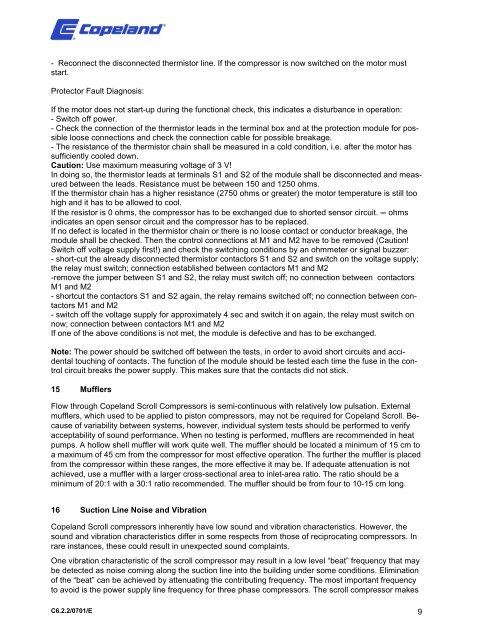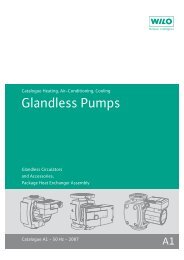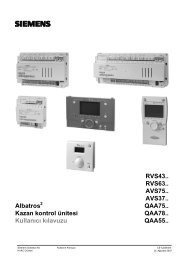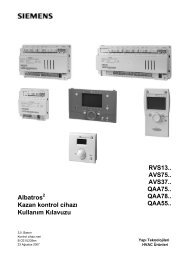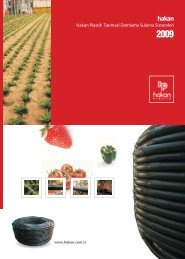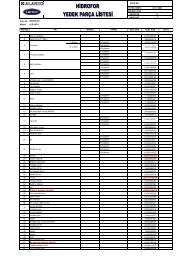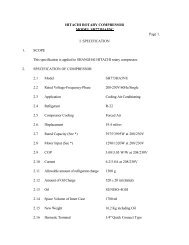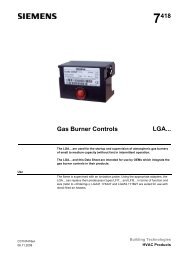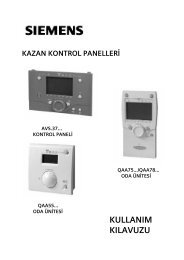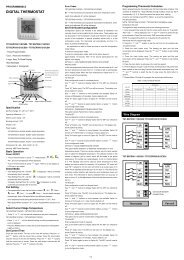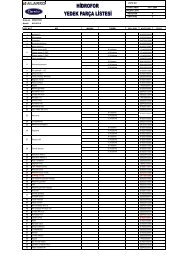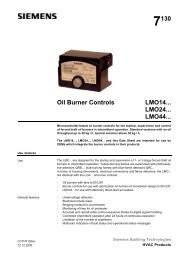A/C Scroll Compressors ZR 90 K4*.....ZR 300 KC*
A/C Scroll Compressors ZR 90 K4*.....ZR 300 KC*
A/C Scroll Compressors ZR 90 K4*.....ZR 300 KC*
Create successful ePaper yourself
Turn your PDF publications into a flip-book with our unique Google optimized e-Paper software.
- Reconnect the disconnected thermistor line. If the compressor is now switched on the motor must<br />
start.<br />
Protector Fault Diagnosis:<br />
If the motor does not start-up during the functional check, this indicates a disturbance in operation:<br />
- Switch off power.<br />
- Check the connection of the thermistor leads in the terminal box and at the protection module for possible<br />
loose connections and check the connection cable for possible breakage.<br />
- The resistance of the thermistor chain shall be measured in a cold condition, i.e. after the motor has<br />
sufficiently cooled down.<br />
Caution: Use maximum measuring voltage of 3 V!<br />
In doing so, the thermistor leads at terminals S1 and S2 of the module shall be disconnected and measured<br />
between the leads. Resistance must be between 150 and 1250 ohms.<br />
If the thermistor chain has a higher resistance (2750 ohms or greater) the motor temperature is still too<br />
high and it has to be allowed to cool.<br />
If the resistor is 0 ohms, the compressor has to be exchanged due to shorted sensor circuit. ¥ ohms<br />
indicates an open sensor circuit and the compressor has to be replaced.<br />
If no defect is located in the thermistor chain or there is no loose contact or conductor breakage, the<br />
module shall be checked. Then the control connections at M1 and M2 have to be removed (Caution!<br />
Switch off voltage supply first!) and check the switching conditions by an ohmmeter or signal buzzer:<br />
- short-cut the already disconnected thermistor contactors S1 and S2 and switch on the voltage supply;<br />
the relay must switch; connection established between contactors M1 and M2<br />
-remove the jumper between S1 and S2, the relay must switch off; no connection between contactors<br />
M1 and M2<br />
- shortcut the contactors S1 and S2 again, the relay remains switched off; no connection between contactors<br />
M1 and M2<br />
- switch off the voltage supply for approximately 4 sec and switch it on again, the relay must switch on<br />
now; connection between contactors M1 and M2<br />
If one of the above conditions is not met, the module is defective and has to be exchanged.<br />
Note: The power should be switched off between the tests, in order to avoid short circuits and accidental<br />
touching of contacts. The function of the module should be tested each time the fuse in the control<br />
circuit breaks the power supply. This makes sure that the contacts did not stick.<br />
15 Mufflers<br />
Flow through Copeland <strong>Scroll</strong> <strong>Compressors</strong> is semi-continuous with relatively low pulsation. External<br />
mufflers, which used to be applied to piston compressors, may not be required for Copeland <strong>Scroll</strong>. Because<br />
of variability between systems, however, individual system tests should be performed to verify<br />
acceptability of sound performance. When no testing is performed, mufflers are recommended in heat<br />
pumps. A hollow shell muffler will work quite well. The muffler should be located a minimum of 15 cm to<br />
a maximum of 45 cm from the compressor for most effective operation. The further the muffler is placed<br />
from the compressor within these ranges, the more effective it may be. If adequate attenuation is not<br />
achieved, use a muffler with a larger cross-sectional area to inlet-area ratio. The ratio should be a<br />
minimum of 20:1 with a 30:1 ratio recommended. The muffler should be from four to 10-15 cm long.<br />
16 Suction Line Noise and Vibration<br />
Copeland <strong>Scroll</strong> compressors inherently have low sound and vibration characteristics. However, the<br />
sound and vibration characteristics differ in some respects from those of reciprocating compressors. In<br />
rare instances, these could result in unexpected sound complaints.<br />
One vibration characteristic of the scroll compressor may result in a low level “beat” frequency that may<br />
be detected as noise coming along the suction line into the building under some conditions. Elimination<br />
of the “beat” can be achieved by attenuating the contributing frequency. The most important frequency<br />
to avoid is the power supply line frequency for three phase compressors. The scroll compressor makes<br />
C6.2.2/0701/E 9


